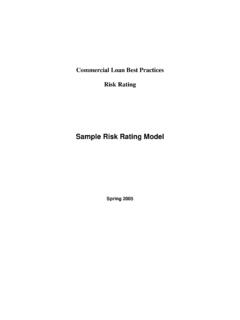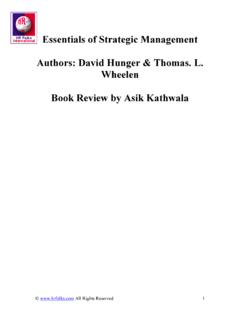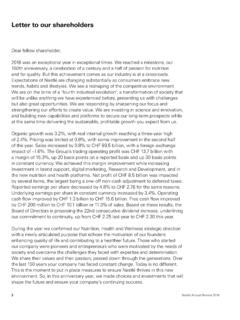Transcription of Army People Strategy
1 army People Strategy Diversity, Equity, and Inclusion Annex 1 September 2020 Diversity is the Force. Equity is the Goal. Inclusion is the Way. 1 Overview - Our People are our greatest strength and our most important weapon system .1 This annex supersedes the army s Diversity Roadmaps of 2011. This annex outlines the army s approach to an enterprise-wide Diversity, Equity, and Inclusion (DEI) Strategic Plan through Leveraging the diversity of experiences, values, and talents will ensure the army maintains a competitive advantage in the war for talent. As the Nation becomes increasingly more diverse, the army must continue capitalizing on the ideals of inclusion, embracing the opportunity to innovate, focusing on excellence, and expanding capabilities. We must acquire, develop, employ, and retain the best and brightest of America s talent pool. Our increasingly complex global responsibilities require that we not only acquire People with different experiences, values, and backgrounds, but also invest in the development and employment of our Soldiers and Civilians.
2 We must successfully integrate their knowledge, skills, behaviors, and preferences (KSB-P) into an army culture that has a proud history of shared and common values in defending this nation. The focus of this annex is the Total force our Active Duty, Reserve and National Guard Soldiers and Civilians. The army will also use this Strategy to communicate to army families that they belong to and benefit from this strategic approach because the army values each member of the force and their contributions. Pursuant to army Senior Leader prior communications, we must actively engage all populations because it is important to facilitate the DEI that we seek to achieve, not because the Census Bureau predicts demographic shifts. At the same time, it is vital to communicate to our how this annex supports the Total force, while valuing and integrating different cultures, backgrounds, and talents. The army provides access to opportunities for Soldiers and Civilians to achieve their aspirations and defined ideals of success, with the strategic outcome of cohesive teams that are crucial to the army s global security mission.
3 In August 2019, the newly appointed Chief of Staff of the army (CSA), General James McConville, in his CSA 40 Philosophy briefing to the army stated, we win by doing the right things the right way; we win with our People , and that is why People matter. GEN McConville also stated, [the army needs the types of Soldiers that represent] the diversity of America. While diversity in the army has increased over time, and now, in aggregate, largely reflects the diversity of America, there are some compositional differences within army subpopulations. For example, the officer corps is not as diverse as the enlisted corps. The individuals who received wages grade or general schedule grades pay are more diverse than those who comprise the Civilian Senior Executive 1 40th Chief of Staff of the army Initial Message to the army Team. 2 Review of the Strategy will occur no less that once every five years.
4 See National Defense Authorization Act (NDAA) 2020, Section 529; Office of Personnel Management and the Office of the Secretary of Defense strategic diversity and inclusion plans; and army Regulation (AR) 690-12 (Equal Employment Opportunity and Diversity). 2 population. Figure 1 below depicts the FY19 Total army officer population by gender and ethnic and race identification (ERI). Figure 2 depicts total army Civilian and Senior Executive Service population by gender and ERI. Figure 3 depicts the 2019 population and 2060 Census Bureau s projected population. If the Census Bureau s projections are correct and the current army promotion model remains constant, the army is accessing and hiring a large portion of the General Officers and Civilian Senior Executive members today to lead a much more diverse force in the future. As such, it is incumbent upon the army to institute policies and systems now to ensure the diversity of leadership it needs for the future.
5 Figure 1. Total army Officer Population Figure 2. Total army Civilian Population 3 Figure 3. 2019 Population and 2060 Projected Populations 1. Introduction - This annex provides direction for organizational, command climate, structural, and procedural changes to enable the army to become a model example of DEI. This annex will evolve to ensure the army remains adaptable in any operating environment. This annex also helps the army continue its focus on the army profession and those core army Values serving as the framework for our diverse and inclusive organizational culture. Continuous feedback from our stakeholders is an essential element of this plan and will be incorporated into the monitoring process for immediate consideration and contribution to future plans and programs. Through this annex, the army is building on its tradition as a global leader in DEI. The army is a multiracial and multicultural force serving in over 140 countries, where many different languages are spoken, cultures observed, and religions practiced.
6 Also, with our diversity in age groups we need to successfully support our entire workforce and manage differing needs, attitudes, and expectations while understanding, valuing, and including the contributions of each Soldier and Civilian to accomplish the army s mission. The army must continue to acquire and retain exceptional talent to support its national security role and enhance the total force. As an inclusive organization focused on elite performance, the army will improve its position as an employer of choice for potential Soldiers and Civilians, and reach untapped communities and agencies where recruiting is less than optimal. By implementing and adhering to this annex, the army succeeds and remains competitive in the current war for talent occurring among the corporate, government, and academic sectors. The army must not only draw from America s diversity, but must also understand how to communicate why DEI is critical to the success of the army profession and how to appreciate, leverage, and integrate principles of DEI into all aspects of its operations.
7 The army must embrace a more diverse population in the future and establish plans to acquire, develop, employ, and retain Soldiers and Civilians 4 from all populations and communities. At the same time, it is essential to communicate to the total force and stakeholders that all personnel are essential to the army s mission; and that differing attributes, experiences, cultures, characteristics, backgrounds, and talents are force multipliers. Through its actions, the army will strengthen the army profession and reinforce mutual trust, cohesion, and benefits of DEI. A key outcome of this approach is to provide access and opportunities for Soldiers and Civilians to achieve their professional aspirations and defined ideals of success. This annex is the army senior leader s guidance for fostering an inclusive environment - one which facilitates collaboration, equitable treatment, and creativity. 2. Definitions - This Annex defines diversity, equity, and inclusion as: a.
8 Diversity - All attributes, experiences, cultures, characteristics, and backgrounds of the total force which are reflective of the Nation we serve and enable the army to deploy, fight, and win. b. Equity - The fair treatment, access, opportunity, choice, and advancement for all Soldiers and Civilians while striving to identify and encourage drivers and identify and eliminate barriers that have prevented the full participation of the total force. c. Inclusion - The process of valuing and integrating each individual's perspectives, ideas, and contributions into the way an organization functions and makes decisions; enabling workforce members to achieve their full potential in focused pursuit of organizational objectives. 3. Diversity, Equity, and Inclusion Mission - Build and sustain army readiness by developing and implementing a strategic plan to advance DEI across the total force and establish the army as a global leader in DEI. 4. Diversity, Equity, and Inclusion Vision - The army is a global leader in embracing all People of our Nation and the unique contributions of those individuals in an inclusive environment while creating war-winning capability.
9 5. Why Diversity, Equity, and Inclusion? - DEI is integral to building trust and achieving overall readiness and mission accomplishment of the total force. DEI enables organizational agility and adaptability by leveraging the attributes, experiences, cultures, characteristics, and backgrounds of the total force. DEI also ensures commanders and leaders are inclusive in their decisions, actions, and missions which enable access, opportunity, and choice for the total force. 5 6. army Diversity, Equity, and Inclusion Framework - This annex includes six pillars that, when fully executed, support the strategic outcomes of a ready, professional, diverse, and integrated force. a. Leader Commitment and Engagement - army leaders are key enablers that drive organizational culture and climate and provide the resources, focus, venues, and authorities for full implementation of DEI across the total force. b. Enhanced Mission Readiness - The army fosters an equitable and inclusive environment which facilitates building diverse, adaptive, and cohesive teams which enable the army to build and sustain readiness.
10 C. The Employer of Choice - The army exhibits a culture and maintains a workplace environment that attracts knowledge workers capable of operating in an information age, adding value, and increasing productivity through creative thinking and innovation. d. Inclusive Leader Development Programs - The army s Leader Development Program ensures all Soldiers and Civilians trust their leaders and have the access and opportunities to fulfill their professional aspirations and defined ideals of success. e. army -wide Inclusive Culture - The army fosters a culture that is built on trust and accepts, values, and views as strengths the attributes, experiences, cultures, characteristics, and backgrounds each Soldier and Civilian brings to the institution. f. Total force Equity - The army maintains a culture in which fair treatment, access, opportunity, and choice are visible and attainable by all Soldiers and Civilians. 7. Background - On 8 February 2008, the Secretary of the army and Chief of Staff of the army established the army Diversity Task Force to conduct a holistic review and assessment of the army diversity program.
















